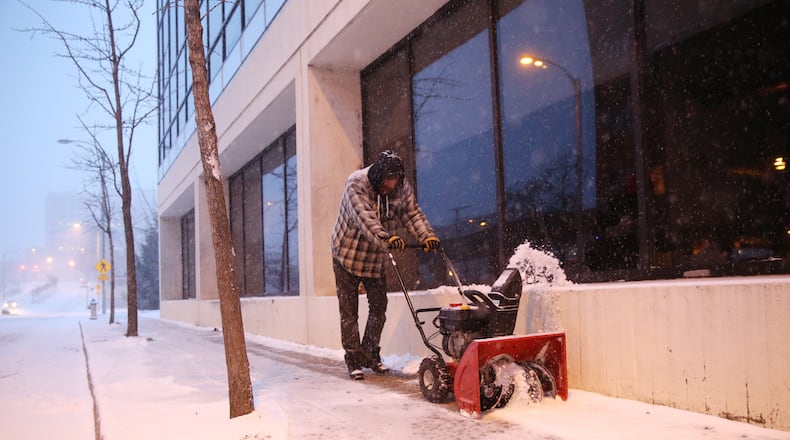Naturally, the injured party suffers, but the negative impact extends well beyond them. The unexpected absence of a single person as they convalesce can have a large impact on those personnel compensating for their teammate’s absence. Now is the time to take oncoming weather conditions into consideration and make preparations to minimize the occurrence of STFs this winter.
Here are some strategies worthy of consideration:
- Review snow removal plans, discuss walkway preparation requirements as well as supplies with your real property building manager. If they need resources or support, facilitate it.
- Consider designating a primary inclement weather entrance and exit to focus initial surface preparation efforts.
- Communicate with organizational personnel. The RPBM must be made aware of any icy surfaces at entrances and exits or wet interior surfaces as quickly as possible. All personnel including visitors must also be notified immediately so they know to avoid the potential hazard until it is corrected. This might involve having a cone, sign or other visual cue placed in the area; those should be readily available.
- All personnel must take advantage of alternate parking locations or pedestrian travel routes any time a less hazardous walking surface is available.
- Stress the need to select foot wear that is suited to the outdoor walking surface rather than the indoor destination. Bringing along an extra pair of shoes for the duty location or purchasing one of the many inexpensive items that slip over the wearer's shoe and provide a high degree of traction are options to consider.
All these principles apply at home where you are the RPBM as well. Make sure you have salt/ice melter, and pretreat your walking surfaces when warranted. Inspect your snow shovel/snow blower before you need it to ensure it is in good condition. Footwear must be slip resistant. Take your time as you work and don’t exceed your physical limitations – snow removal is a physically strenuous activity.
Apply these recommendations and work together to remove or avoid unnecessary STF risks this winter. We all benefit when lost workday injuries decrease in their frequency and severity. Make this the winter your home and organizational STF prevention plans are the best ever.
About the Author
